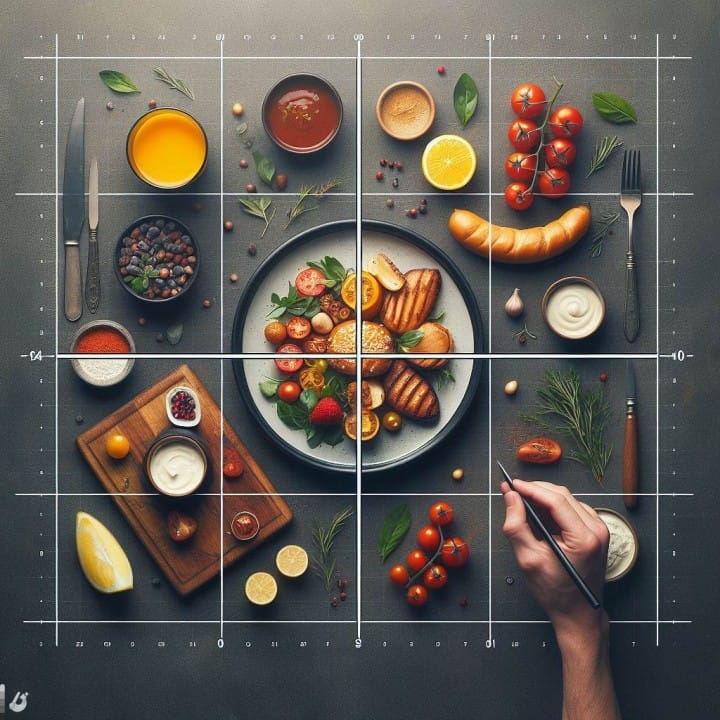
In the art of food photography, composition plays a pivotal role in transforming a simple meal into a visual feast. One of the fundamental principles that can dramatically enhance your food images is the rule of thirds. This technique is not just a rule but a powerful tool to create balance and interest in your photos. In this blog, I’ll guide you through the nuances of using the rule of thirds effectively in food photography.
1. Understanding the Rule of Thirds:
The rule of thirds involves dividing your image into nine equal parts by two equally spaced horizontal lines and two equally spaced vertical lines. The points where these lines intersect are where the eye is naturally drawn.
2. Placing Your Subject:
- Strategic Placement: Place the main elements of your dish at or near these intersections. It could be the main dish, a garnish, or even a fork or spoon that adds to the story.
- Off-Center Composition: Instead of placing the subject in the center, positioning it off-center using the rule of thirds creates more visual interest and balance.
3. Working with Backgrounds:
- Background Elements: Use the rule of thirds to position background elements like cutlery, ingredients, or napkins. This can add depth and context to your photo.
- Negative Space: Utilize the spaces between the gridlines to incorporate negative space, which adds a sense of simplicity and elegance to your photograph.
4. Balancing the Frame:
- Weighting Elements: The rule of thirds helps in balancing different elements in the frame. A well-composed photo feels naturally balanced.
- Contrast and Color: Consider the color and texture contrasts while placing your subject according to the rule of thirds.
5. Enhancing Focus and Depth:
- Focus on Intersections: Placing the focal point of your dish at one of the intersections makes the photo more engaging.
- Depth of Field: Combine the rule of thirds with shallow depth of field to highlight the part of the dish in focus while softly blurring the rest.
6. Breaking the Rule:
- Creative Flexibility: While the rule of thirds is a great guideline, don’t be afraid to break it for creative and stylistic reasons.
- Experimentation: Sometimes centering your subject or placing it at unconventional points can yield striking results.
7. Practical Application:
- Trial and Error: Practice using the rule of thirds in various setups. Experiment with different dishes and compositions.
- Review and Learn: Review your photos and see how the rule of thirds has impacted them. Learning comes from both successes and less successful attempts.
Conclusion:
The rule of thirds is a simple yet effective tool in the arsenal of food photography. It helps in creating photographs that are not just visually pleasing but also emotionally engaging. Remember, the best use of the rule of thirds comes from understanding it so well that it becomes an instinct rather than just a rule. So, pick up your camera, and let’s bring the art of composition to your culinary captures!